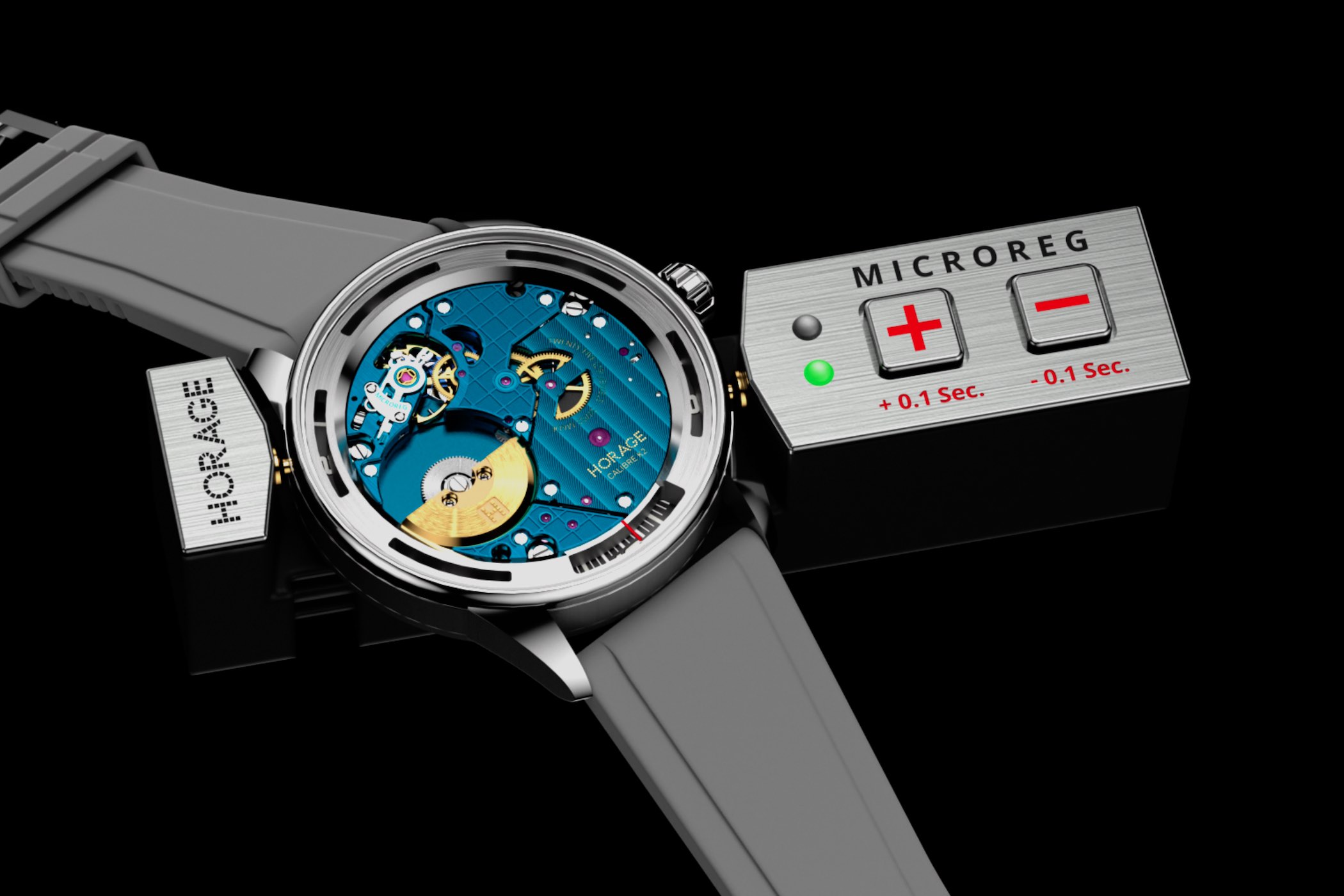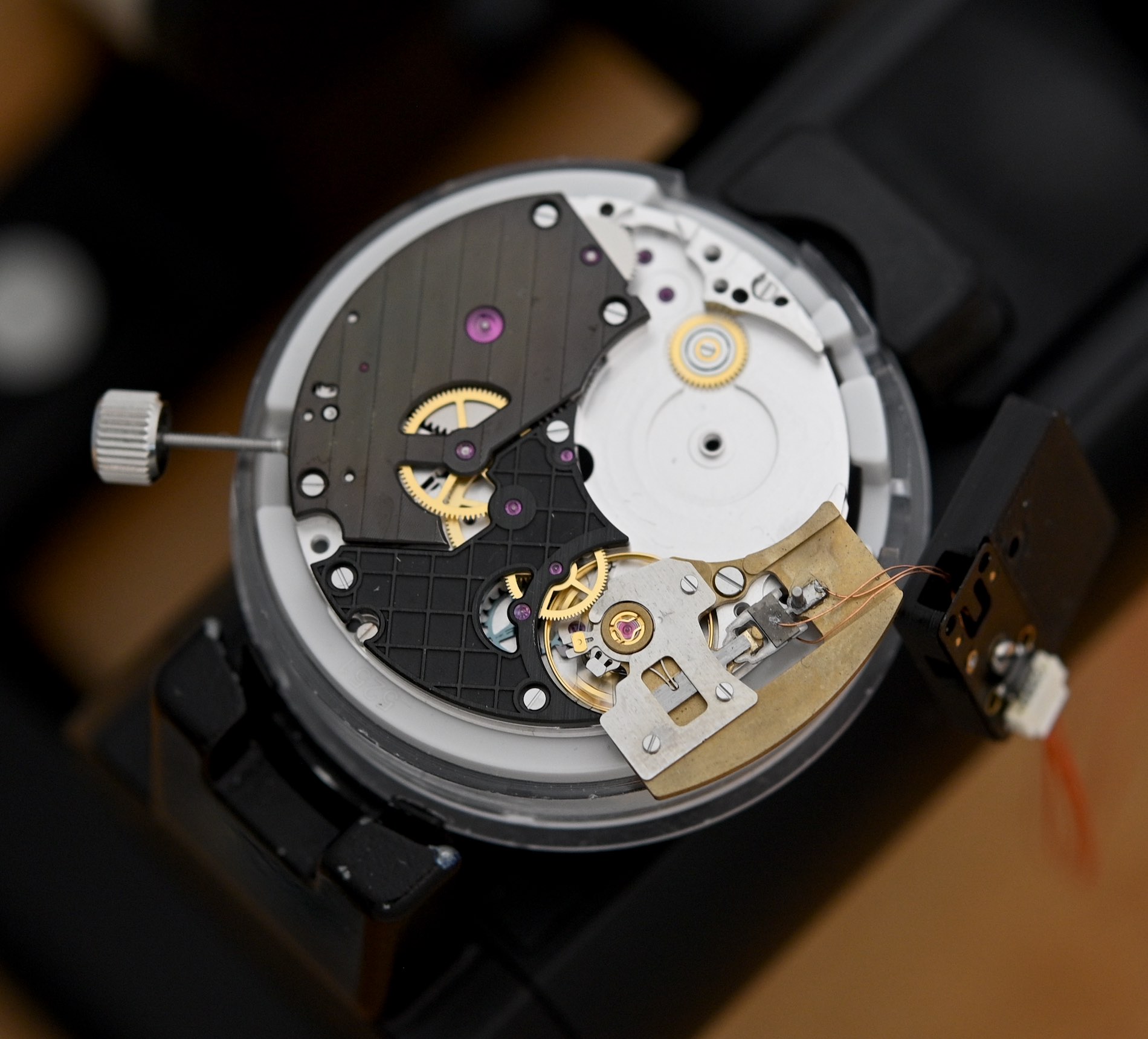The Innovative Self-Regulation Technology of the Horage Revolution 3 MicroReg
Precision matters in watchmaking, and it’s now easier than ever before. Think of this as your personal watchmaker…

Horage truly stands apart in the watch industry with its start-up mentality, forward-thinking approach, and capacity to explore unconventional methods. This young Swiss watchmaking company, based in Biel, boasts a remarkable level of vertical integration despite its size. Led by Tsuyu Huang, Andi Felsl, and their dedicated team, Horage has introduced a smart concept aimed at achieving unparalleled precision in watch regulation, but also superior user-friendliness. This innovative idea indeed allows watch owners to adjust the rate of their watches themselves, at home, without having to open the case and expose the movement. Meet the Horage “Quest to Zero” MicroReg.
The quest for mechanical precision in watchmaking is a truly fascinating journey, rich in historical and scientific significance. From the early days of horology, when artisans meticulously honed their skills to create accurate timepieces, to the modern era of cutting-edge technology and innovation, this pursuit has continually pushed the boundaries of what is possible. The quest for precision has been a catalyst for scientific progress, driving advancements in countless fields. This relentless search for precision in traditional mechanical watches continues to captivate enthusiasts. Precision truly matters – a good watch must be accurate. The various innovations in the field of chronometry are captivating. Horage and Miniswys now present a smart, intriguing solution with their innovative fine adjustment system, dubbed MicroReg.
While various factors influence the precision of a mechanical watch, the adjustment of its movement is of paramount importance. Historically, the régleurs (employees dedicated to finely adjusting the movements) were considered the elite of watchmakers within the manufactures. Their skill in fine-tuning movements was critical, not only for regular production but also for chronometry trials, which enhanced the reputation and prestige of watchmakers. Even with modern technologies and manufacturing methods simplifying the process, the adjustment of movements remains a critical step in production.
The functioning and rate of a watch are influenced by numerous factors and elements, including the energy supplied to the balance, the adjustment of the beat, the hairspring, the watch’s position, temperature, magnetism, and lubrication, as well as its evolution over time, among other factors. Adjusting the rate of a watch, therefore, involves complex procedures that require a deep understanding of these variables and meticulous fine-tuning to ensure optimal performance.
Focusing on key operations, there are two main options to adjust the rate of a watch. As detailed in our Technical Perspective article, you can either adjust the active length of the balance wheel spring by sliding the regulator of the raquetterie, or work on the inertia of the balance wheel for a free-sprung balance. Both methods require precision and expertise to ensure the watch keeps accurate time. Recently, Omega unveiled the Spirate system, aiming at obtaining super-high precision ratings and easier fine-tuning processes, yet still requiring the intervention of a watchmaker.
The Horage MicroReg technology
MicroReg is an all-new technology designed to simplify and enhance the regulation of mechanical wristwatches, all while preserving the true mechanical essence of the timepiece. This innovative system offers a smart and efficient solution for fine-tuning watch movements, ensuring precision and unprecedented practicality.
The solution was born from a collaboration with Miniswys SA, a spin-off of the Biel-based innovation company Creaholic. At its core, the technology features a miniature actuator designed by Elmar Mock, one of the co-creators of the Swatch watch. Remarkably, this actuator requires only two elements: a ceramic component and a metal carrier. It operates without coils, magnets, or chips inside the watch and consumes minimal energy, with zero power consumption at a standstill. Miniswys has (among other applications) applied this technology to smartphone cameras.
When subjected to electric tension, this miniature actuator can be moved forward or backward. The Horage MicroReg leverages this capability to drive a traditional fine-adjustment system (inspired by the Grossmann index adjuster micrometre screw), modifying the active length of the balance spring. This smart, precise adjustment can be used during the production phase, but also and most importantly by the owner of the watch after the movement has been encased. It offers remote, external access to the regulation, enabling both watchmakers and watch owners to perform adjustments more timely and accurately without even opening the watch case. This approach minimizes issues such as dust ingress, water resistance testing, and other potential points of failure associated with case opening. Horage likens it to having a “sleeping watchmaker” inside the watch, ready to perform 0.1-second adjustments whenever needed.
It is particularly interesting that watches are typically regulated in controlled, normalized environments, such as those required to meet the standards of the COSC (the Official Swiss Chronometer Testing Institute). However, in real-life scenarios, a watch’s performance may vary based on the wearer’s habits, activities, and environment. The concept of “interactive adjustment” isn’t entirely new, as seen with Urwerk for example with the EMC, but the approach here is different. Instead of using a screw for adjustments, the Miniswys super-precise actuator is employed. This innovative actuator offers an unprecedented level of precision and convenience, allowing for real-time adjustments that can significantly enhance the watch’s accuracy in everyday use.
The Horage Revolution 3 MicroReg watch
During our visit to Biel, we had the opportunity to examine the first “proof-of-concept” prototypes of the MicroReg regulation system. The solution is both smart and conceptually effective, though it is still in the early stages of development. Horage anticipates that their first watch featuring MicroReg technology will be available in about two years, with the launch of the Revolution 3 MicroReg.

This watch will be powered by the brand’s K2 Microrotor movement, enhanced with MicroReg technology. To highlight the innovation, the movement will be inverted and prominently displayed at the front of the watch, while time indication will be relegated at the periphery on a rotating disc. And yes, because precision does matter, you also get a traditional analogue time indication at the back of the watch!
The project is expected to take 24 months to deliver, with a projected date of shipping commencing in late summer 2026. Founders pricing is set at CHF 3,900 for people who would like to jump on board now. For more details, please visit www.horage.com.















9 responses
Whilst technically admirable, the concept is retarded. A watch that you can set to the utmost accuracy, that only displays time on the visible face in 5 minute increments.
Great writeup and many thanks for spreading the word. It is an exciting project for us and our fan base.
Thanks Andi! Really curious to see the future of this technology…
Does it strike anyone else as ironic that a watch engineered for 0.1s regulation adjustment only displays the time in 5 minute increments?
It’s exciting and I hope they come up with more traditionally dialled versions of these.
As much as the achievement is impressive, I’d still rather see a normal dial over the movement and “alternative” ways of telling the time.
I’m probably not understanding the scale for the +/- adjustment, because it looks like you can only adjust by 10 X 1/10ths so 1 second ?
Or just use a screw, from the outside of the case.
Sure, why not because we can. A niche within a niche. Tho yes, what point is such accuracy without what many consider a basic three-hander info.
All the people here complaining about being able to adjust with sub-second accuracy while the watch only displays minute resolution seem to not realize that this is about. It’s about regulating the speed at which it drifts. Like this you can tune the watch so that it wont be off by 5min every week again and again, like most automatic watches. It’s brilliant but maybe you could describe it a bit more clearly, so people here won’t make bad comments because they misunderstand the mechanism.